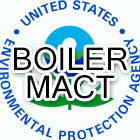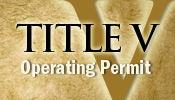 Do you have an upcoming renovation or demolition project on your schedule? For building owners and contractors, it is important to remember that building materials may contain hazardous toxins that may require specific handling, removal and disposal methods. Construction materials that are commonly encountered on the job site that may require specific care and disposal are:
Do you have an upcoming renovation or demolition project on your schedule? For building owners and contractors, it is important to remember that building materials may contain hazardous toxins that may require specific handling, removal and disposal methods. Construction materials that are commonly encountered on the job site that may require specific care and disposal are:
Asbestos
Asbestos can be a cancerous causing substance that can cause numerous diseases and health concerns. It is a fibrous material that is still used today in several building materials because of its superior strength and excellent insulating properties. It can be found in adhesives, caulks, electrical panels, drywall, fireproofing, flooring tiles, insulation, paints, plaster, and exterior roofing materials. A licensed asbestos inspector can help you sample and identify asbestos containing material (ACM) on your project site. It is recommended for a single family homes and multi-family units (2-4 units) and required for any building undergoing a controlled fire exercise, multi-family units (larger than 5 units), commercial, and industrial buildings that inspections and all friable ACM is removed before work starts.
Chlorofluorocarbons and Halons (CFCs)
CFCs contribute towards a loss in ozone which increases our chances of exposure from the sun’s Ultraviolet rays (UV). This increase the chance for skin, eye, and immune system concerns. CFCs are commonly found in bubblers, cooling units, heat pumps, and refrigeration appliances. Halrons are used in fire extinguishing devices. A project site walkthrough before demolition or renovation can help you identify CFC and Halron containing units.
Lead
Lead is commonly found in pre 1978 residential, commercial, and industrial exterior and interior paints. Lead can also be found in emergency lighting units. If lead is ingested and inhaled, it cause serious neurological and internal organ concerns. A licensed inspector can help sample and identify lead containing substances on your project site. Remember many buildings contain several layers and coats of paint.
Mercury
Mercury is contained in several pressure and temperature monitoring devices. It can also be found in agricultural, dental, and electrical devices. When exposed to an outside environment, Mercury slowly vaporizes which releases dangerous vapors that can go unnoticed by building owners and contractors. The harmful vapors can lead to several neurological and birth defects.
Polychlorinated biphenyls (PCBs)
PCBs are a cancer causing substance that can be found in caulk, electrical equipment, oils, and specialty paints. An environmental consultant can help you sample and identify PCB containing material on your project site. Labeling PCB containing materials before renovation or demolition can help limit the chance of exposure and contamination.
Performing a site walk through with an environmental consultant can help identify and ensure proper disposal of any hazardous materials that may exist on your project site. Collecting an inventory and gaining an understanding of all building materials on your project site can help ensure hazardous materials do not impact public safety and the environment during your renovation or demolition project.
More information on handling hazardous materials before your renovation and demolition project can be found at: http://dnr.wi.gov/topic/demo/.
 For those Area Source facilities which are subject to the new EPA Boiler MACT (40 CFR Part 63, Subpart JJJJJ), an important deadline is fast approaching. The Notification of Compliance (NOC), due July 19, 2014, is required for all existing Area Source facilities which were required to complete either the One-time Energy Assessment or an initial Tune-up Work Practice. Both the Energy Assessment and Tune-up were due March 21, 2014.
For those Area Source facilities which are subject to the new EPA Boiler MACT (40 CFR Part 63, Subpart JJJJJ), an important deadline is fast approaching. The Notification of Compliance (NOC), due July 19, 2014, is required for all existing Area Source facilities which were required to complete either the One-time Energy Assessment or an initial Tune-up Work Practice. Both the Energy Assessment and Tune-up were due March 21, 2014.

